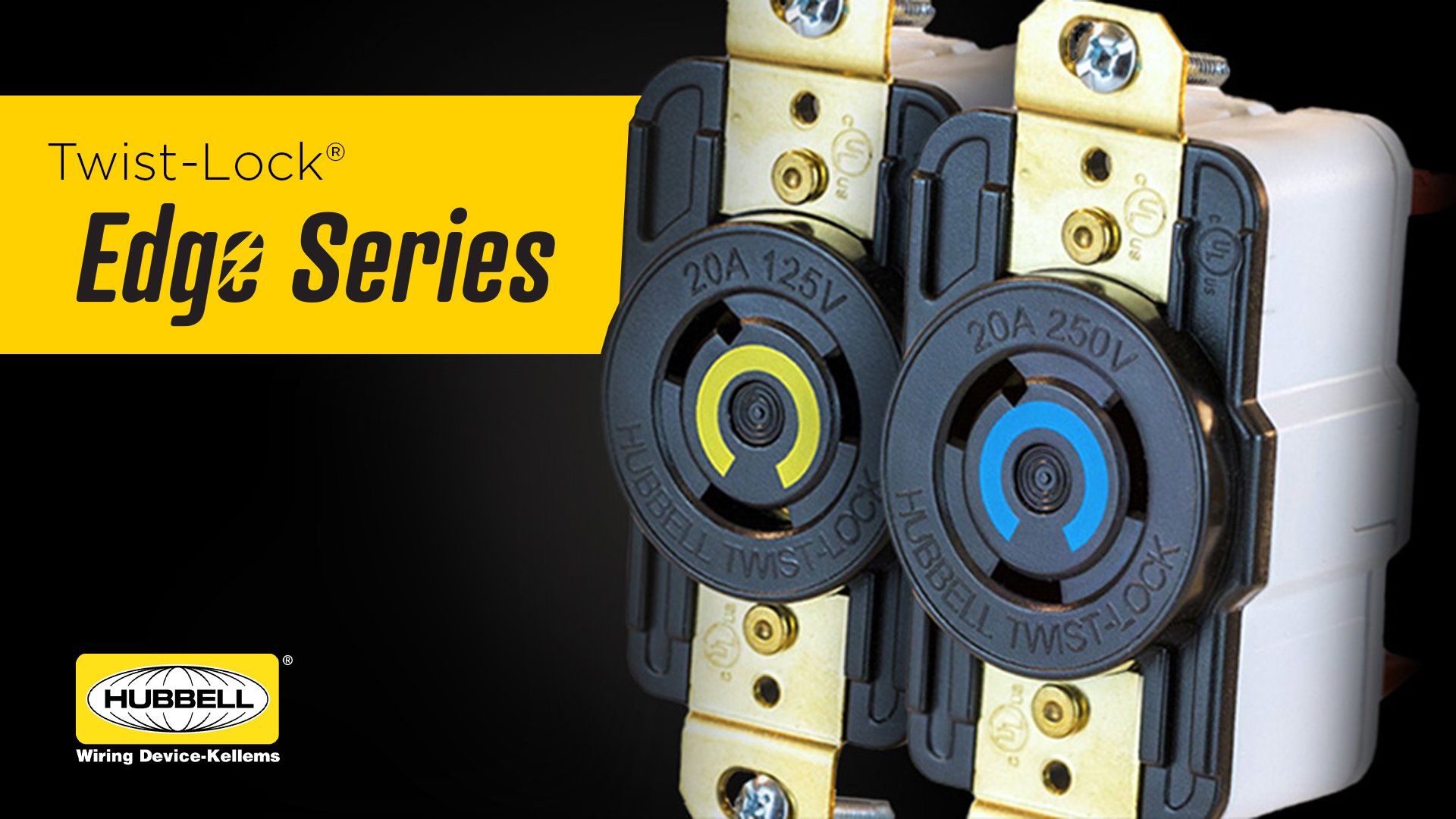Every day we’re all inundated with a plethora of either/or choices—and they’re not always easy to decide. True or False? Paper or Plastic? Soup or Salad?
Well, machine and equipment builders—the kind of folks who typically use hundreds or thousands of Twist-Lock® type receptacles in their production output every day—are about to have a new either/or choice to make. And when I say new, I mean brand new—it will be an alternative to something that they have just kind of taken for granted for decades. However, as opposed to many other either/or choices, they might find this one to be a lot easier to make.
68 seconds or 11 seconds?
That’s the difference between the labor time it takes to perform a traditional screw termination in a receptacle installation—the way it’s been done for about 70 years or more—and to perform a spring termination—a process enabled by a new product innovation developed by Hubbell. That’s about an 80% savings.
We’re calling it the Hubbell Twist-Lock® EdgeConnect™ Spring Termination Locking Receptacle. You’ll call it a complete sea change—one that could dramatically improve your production workflow.
The system in a nutshell: rather than having to wrap each wire around a screw and torque it down with a screwdriver or torque wrench, you just place each wire in a hole in the device, and flip a plunger in front of each with your fingers.
Not only don’t you need any tools, but, when you flip the plunger, the spring inside instantly clamps down securely on each wire with the precise tension needed. Furthermore, unlike a screw termination, things like vibration and heat cycling will never cause the connection to loosen, so it’s once and done—pretty much forever.
Early user feedback—“Amazing!”
Right off the bat, one of Hubbell’s largest receptacle customers—they use thousands at a time—told us that they have been able to redeploy their “termination employees” to more productive and value-added assembly tasks. Indeed, they had found that the multitude of manual screw terminations they had to do—at more than a minute each—could be one of the more time-consuming aspects of production, although, of course, they considered it a vital time investment to ensure a quality job. Now, they are finding that their employees can do a quality termination job in a fraction of the time, and then move on to other tasks—it’s like adding new manpower for no cost!
And the technicians themselves are pretty excited too. They say no more torque wrench or screwdriver for these tasks, no more need to measure torque (or sometimes, they admit, worry about not measuring it!), and especially, no more wrist strain and worries about carpal tunnel for having to do thousands and thousands of hard twisting screw terminations one after the other.
Also, we expect that their customers—the equipment users—will find a huge benefit down the road as well. While everyone knows that they need to make the re-torquing of receptacles part of their preventive maintenance plan, how many really do it, and how many only deign to revisit the termination in the event of power loss or heat buildup—when the damage is already done? And while that’s rare, with a proper spring termination, it is almost impossible. With no screw or wire to work their way out, the termination will stay tight continuously, through the most challenging industrial usage conditions.
Find out more
If saving time and installing faster would be of value for your operation, using spring terminations could be a rebirth for your workflow efficiency. Three-wire versions of the new Hubbell Twist-Lock® EdgeConnect™ Spring Termination Locking Receptacle have officially launched, with four- and five-wire versions to be available later in the year. Contact your local Hubbell sales representative today to find out more. You’ll soon see why “screws or springs” might soon become one of the easiest—and most effective—either/or choices that you can make for boosting your operational efficiency.

